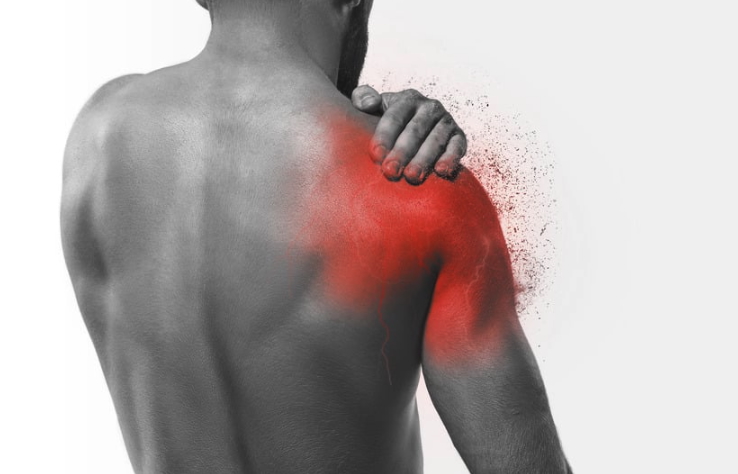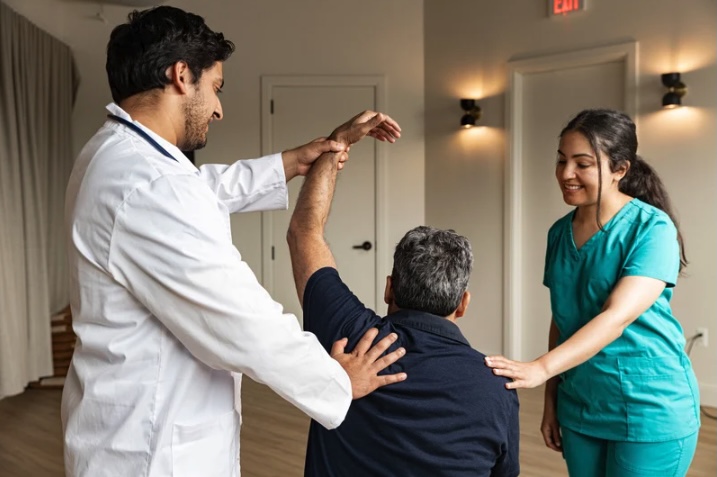
Treating a torn labrum can often eliminate your shoulder pain and return your shoulder to normal function. Labrum tears come in all shapes and sizes: anterior tears, posterior tears, 360⁰ tears.
Each warrants a unique approach. Below I will briefly talk about one of the more common types of labrum tears called the SLAP tear (short for Superior Labrum Anterior Posterior).
The Labrum and Shoulder Stability
A few words about the labrum in general:
The labrum is a ring of cartilage that encircles the shoulder socket or glenoid. In contrast to other ball and socket joints like the hip that rely mostly on bone for stability, the shoulder owes much of its stability to a group of soft tissues including muscle, cartilage and capsule. The labrum is part of this group. It deepens the glenoid and acts as a bumper around the socket, helping to prevent dislocations.
Soft tissues stretch more than bone and allow the shoulder to move with incomparable flexibility. But the flexibility comes at a price.
If the soft tissues like the labrum “give” too much, they can tear away from the socket. And a torn labrum can result in instability, “catching” and pain.
What is a SLAP Tear?
The term “SLAP” describes a specific type of torn labrum that occurs between the 10 o’clock and 2 o’clock position on the socket (imagine your shoulder socket as a clock). There are actually about 10 types of SLAP tears, however, in this piece I’m speaking predominantly about one of the more common ones called a type 2 tear.
Diagnosing a Labrum Tear
Like most other areas in orthopedics, your surgeon will rely on a combination of your history, physical exam, and radiology studies such as an MRI to make the diagnosis. SLAP tears tend to occur when someone sustains a trauma in which their arm is outstretched or “jammed”. Think of a rock climber catching himself from falling. Or think of a weight lifter bench pressing a large sum of weight and then awkwardly releasing it back on the rack.
I personally find that a patient’s history gives some of the most valuable information needed to make this diagnosis.
When is Surgery the Right Choice?
Treatment ranges from conservative measures such as physical therapy to surgery.
Assuming conservative treatments like therapy fail and surgery is warranted, the particular surgery that is right for you will depend highly on your age.

Should Your Surgeon “Fix” Your Labrum or Treat the Biceps?
What does the biceps have to do with the labrum? As it turns out, quite a lot.
The 12 o’clock position of the labrum is actually the attachment site for part of your biceps called “the long head.” The biceps has two separate “heads” or segments that attach in two completely different locations in the shoulder. The long head tendon starts inside the shoulder joint on your labrum.
The fact that SLAP tears tend to occur where the biceps originates has profound implications for why they are a painful and how they are treated.
When you have a SLAP tear, the biceps tendon can pull on the labrum and cause inflammation that radiates into the arm.
Treatment Strategies by Age
Surgeons have debated for years now how to treat SLAP tears. But the best recent studies show that repairing the labrum in young patients (about 35 and younger) via arthroscopic surgery is likely the best strategy. Whereas doing some form of biceps tendon release is the better strategy in older patients.
How Does the Surgery Work?
To fix a torn labrum the surgeon places small anchors – about 3 mm in diameter- made of a plastic or bone-like material into the rim of the shoulder socket. The surgeon then passes sutures from the anchor around the labrum tissue itself, and ties it back from where it had torn. Over time, the labrum should heal back to bone, restabilizing the shoulder.
What is Biceps Tendon Release?
What do I mean when I say “biceps tendon release?” Some patients often get quite worried when I say this to them.
There’s actually no reason to worry. Releasing the biceps from within the shoulder joint does not affect your overall strength as you still leave one of the biceps attachments undisturbed. The only potential side effect is cosmetic, what is called a “popeye” deformity, and only happens in about 3/10 cases. It can be prevented in nearly all cases by doing a tenodesis- a small procedure that secures the biceps back to the upper arm in a slightly different location.
As far as which procedure -tenodesis or tenotomy- works better, they both functionally work the same. With a tenodesis you will have an extra scar, with the tenotomy you might get a change in appearance of your upper bicep.
High Success Rates in the Right Patient
Both SLAP repairs and biceps release have high success rates in the right patient.
If you have had a torn labrum or think you may have had a torn labrum and would like to restore more pain free motion and strength in your shoulder, please contact us for a personal consultation.
